Why You Need To Know The Name Patricia Urquiola
A few months ago we were searching through Pinterest when a photo caught our eye…
The Image That Started It All.
As a company with a penchant for natural stone, this mish-mosh of coloured marble had us feeling giddy.
How was this achieved?Who did it? And importantly, how do we get it in our showroom?!
A little research returned a name that we would soon come to love — Patricia Urquiola.
Patricia Urquiola — Designer
Who Is Patricia?
Patricia Urquiola is a Spanish born, Italy based, interior designer and architect.
Known widely as a designer who is ‘playful and poetic, yet pragmatic and functional,’ her ability to rework and reinvent makes her projects seriously magic.
She designs anything from large format porcelain tiles to furniture, using a minimalist approach to create simplistic yet powerful products.
Her ability to mix textures, patterns, colours and materials to create unique and extravagant pieces is what makes her such an interest to those in the industry — including us. We can’t get enough of what she does.
As a company who live to innovate and create, Patricia is our kind of gal.
Let’s take a look at some of our favourite projects of hers...
Modular and compoundable bookcases characterised by the unusual shape of an irregular hexagon, with shelves made out of sloping marble laths, and background in polychrome marbles. Body and shelves of Verde Laguna and background in Noce Canaletto wood. Read more here.
Earthquake 5.9
The Earthquake 5.9 collection recalls the Emilia earthquake of May 2012 that affected many businesses in the [Miradola] area, including [stone manufacturers Budri]. [Patricia] created a collection of furnishing items and coverings in marble and onyx… using hundreds of fragments of ‘quake-struck’ slabs to create something beautiful, to inject life back into something that had been totally destroyed in the space of a few seconds.
Large table whose preciousness is enhanced by a geometric pattern with a lens effect, juxtaposing precious marbles and onyxes to cream-coloured resins. The table top leans onto iron aquamarine green coated foot. Purchase here.
Mutina Large Format Tiles — Dechirer Collection
The Dechirer Collection of large format porcelain panels was the product that catapulted Mutina into the realm of boutique surfaces.
The tiles are perfectly suited to internal and external vertical applications, being only 3mm thick (with fibre backing), and only weighing around 25kg. Many have compared the new XL size to a porcelain wallpaper.
Déchirer XL is made from pure ceramic body, which is then pressed in a latest generation machine that makes it possible to create textured surfaces even on large slabs, keeping the details of the bas-relief decorations perfectly well defined. The product is sold with rectified edges to allow a minimal joint.
The three panels, available in three shades: Gesso, Grafte and Avana, are available exclusively in Australia through Artedomus.
The idea behind the collection is to pay homage to the products ceramic identity, whilst tapping into the aesthetics of opaque concrete.
Architectural Surface Expert, Silvana Zelaya-Caruso, who has a background in Interior Design, thinks these panels would look incredible as wall cladding in a laundry.
Dechirer XL in Grafite
Dechirer XL Panels taken in our showroom at SteedForm.
“Déchirer is the beauty of being able to risk and not wanting to follow any rules. It’s the beauty of breathing air and interpreting it the way we want. We hope this goes beyond current trends. It also serves as a sort of abacus that might appeal to the sensitivity of the designers who use it, playing around with neutral shades, decorations and light, to create a personal vision.” — Patricia Urquiola
Biscuit Parquet
When we saw this one — we freaked. Having recently re-ignited our love affair with chevron and herringbone, Patricia’s insane flooring patterns had our jaws on the floor.
The Biscuit Parquet Collection is all about re-imagining traditional wooden flooring — ‘rounded, beveled and curved boards along with a slight ‘bombe’ effect create a new language.’
Biscuit Parquet Collection by Patricia Urquiola
Cover
Cover was what started Patricia’s love affair with large ceramic slabs.
The collection was made possible through Continua Plus technology. Continua Plus is a clay that is mixed with a ‘micro-grit,’ which is then used as a base for the coloured prints and patterns — applied using a silk-screen method. How they turn out may be ‘irregular, figurative or geometric.’
This technique was vital in creating a compact material with powers, grains and flakes, that does not have any colour or digital additions.
Rabbet
Rabbet is a fairy tile, in which marble expresses purity and simplicity.
Rabbet (that literally means joint) represents the coming together of two elements. Traditionally applied using wood products, Patricia trialed something new, and used marble.
“Walls become showcase for different type of marble manufacturing: smooth surfaces alternate with matelass and comb texture. Geometric, pastel-colour onyx and travertine marquetry alternate with inlaid marble and wood surface.”
Who’s your current design crush? Let us know in the comments below!
Don’t forget to follow us on Facebook and Instagram.













